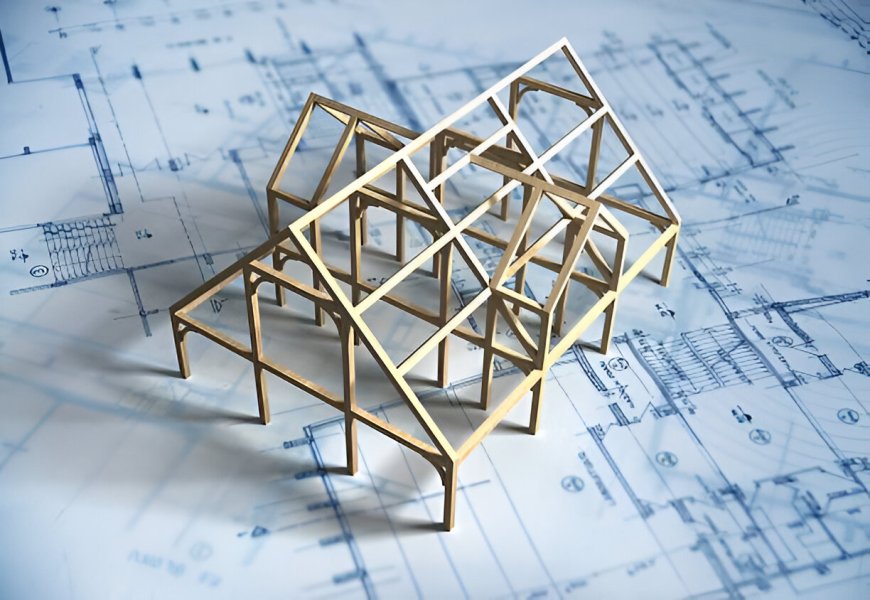How to Design a House: Step-by-Step Guide
Learn how to design a house with our step-by-step guide. From house planning to interior design, discover tips for designing your own home, floor plans, and layouts.

Designing your own home can be one of the most exciting and rewarding experiences of your life. Whether you're building from the ground up or renovating an existing space, knowing how to design a house effectively is key to creating a functional, stylish, and comfortable home. This step-by-step guide will walk you through the entire home planning process, helping you from conceptualization to final touches. Youll learn about designing your own home, understanding floor plans, and using home design software to bring your ideas to life.
Step 1: Start with Your Vision and Lifestyle Needs
The first step in designing your own home is understanding your lifestyle needs and how your new space can support them. Think about your daily activities and the people who will be living in the house. Are you someone who enjoys hosting, or do you prefer a more private space? Do you have a large family, or is the space just for you? These questions will guide your house design decisions.
Consider Your Priorities:
Living Space: How much space do you need for family rooms, bedrooms, and bathrooms?
Functionality: Consider spaces like home offices, laundry rooms, or gyms if needed.
Storage: Think about closets, attics, basements, or cabinets for efficient storage.
Creating a home blueprint that aligns with your needs will ensure your house is not only beautiful but also functional.
Step 2: Decide on the Floor Plan and Layout
Once you have a clear understanding of your needs, it's time to decide on the home floor plan and home layout. The floor plan is the foundation of your house's design and dictates how the space will flow. There are various types of floor plans to consider, including open-concept layouts, traditional room layouts, and custom-designed floor plans.
Considerations for Your Floor Plan:
Room Sizes: What is the ideal size for each room, and how do you want them to connect?
Traffic Flow: How will people move through the home? Aim for spaces that allow for easy navigation.
Natural Light: Ensure rooms are well-positioned to take advantage of natural light.
Many people choose to hire an architect or use home design software to create custom floor plans that reflect their vision. Some home design software even allows you to visualize your house sketching ideas before you start construction.
Step 3: Focus on the Architectural Design
The architectural design of your home will set the tone for its overall appearance. From the roofline to the materials used, architectural design influences not only how the house looks but also how well it fits within its environment.
Key Elements of Architectural Design:
Style: Choose a style that reflects your personality, whether its modern, traditional, or rustic.
Exterior Design: Consider the facade, roof type, and window placement for curb appeal.
Building Materials: Select materials that complement your style and are durable.
For example, a modern style house may include flat roofs and large glass windows, while a more traditional design could feature gable roofs and brick exteriors.
Step 4: Plan the Interior Design and Space Allocation
Interior design plays a crucial role in designing a home. It's where you bring in personal style, color schemes, and furnishings to create the mood and function you desire. The interior design process involves selecting materials, colors, and finishes for each room while considering how space will be used.
Interior Design Tips:
Open or Closed Spaces: Decide on open spaces (open-plan kitchens and living areas) or more private spaces (separate rooms for each activity).
Room Purpose: Design each room with its function in mind. For example, create a relaxing bedroom retreat, a functional kitchen for cooking, or a stylish living room for entertainment.
Lighting: Good lighting can transform a space. Ensure you have ample natural light and complement it with stylish indoor lighting fixtures.
The home layout and design should balance aesthetics and functionality, ensuring each room serves its intended purpose while maintaining flow throughout the house.
Step 5: Choosing Materials and Finishes
Choosing the right materials and finishes is vital to the aesthetic and longevity of your home. From floors to countertops, every decision contributes to the overall feel of your home.
Material Choices for Key Areas:
Flooring: Hardwood, tile, and carpet are popular choices. Think about durability, maintenance, and style when selecting flooring.
Countertops: Granite, quartz, and marble are durable options for kitchens and bathrooms.
Paint and Finishes: High-quality paint and finishes can make a huge difference in the final look. Opt for finishes that align with the design style and are easy to maintain.
This stage is also where you can incorporate elements of luxury interior design or keep it budget-friendly depending on your preferences and budget.
Step 6: Finalize Your Budget and Timeline
Designing a house is an exciting process, but it can also be overwhelming if not properly planned. Once youve decided on your home design, its time to set a realistic budget and timeline for the project. Costs can add up quickly, so having a clear idea of how much you want to spend will help you make informed decisions during the planning process.
Budget Tips:
Factor in Hidden Costs: There may be unforeseen costs like permits, structural changes, or utility installations.
Prioritize: If you have a limited budget, focus on the most important aspects of your home design first and look for cost-effective alternatives for other areas.
Get Professional Help: Hiring a professional designer can save you time and money by helping you avoid costly mistakes and get the most out of your budget.
Step 7: Use Home Design Software to Visualize Your Ideas
Using home design software is a great way to visualize your ideas before committing to them. With modern tools, you can create detailed home blueprints and 3D renderings of your home to get a feel for how the space will look once completed.
Some popular home design software options include:
SketchUp: A user-friendly design software that offers both 2D and 3D rendering.
AutoCAD: A professional tool used by architects and interior designers for creating precise plans.
Roomstyler 3D Home Planner: A free online tool that helps you design your home layouts in 3D.
These tools help bring your house sketching ideas to life and can prevent costly mistakes by allowing you to experiment with various layouts and designs.
Step 8: Collaborate with Professionals
Now that you have a clear idea of how to design a house, its time to bring in the experts. Collaborating with architects, contractors, and interior designers ensures your vision is realized efficiently. Professionals can help refine your home layout, select materials, and navigate complex building regulations. Hiring a custom home design expert or interior decorator can also add a personal touch to your design, ensuring your home matches your personality and needs.
Ready to start designing your dream home? Whether you're starting from scratch or remodeling your current space, we can help guide you through every step of the home planning process. Contact us today to schedule a consultation and bring your vision to life with expert assistance in designing your own home.
Conclusion
Designing a house is an exciting journey that requires careful thought and planning. By understanding how to design a house, considering your needs, choosing the right floor plan, and utilizing the right materials and professionals, you can create a home that reflects your personality and lifestyle. From house planning to architectural design, every decision will contribute to creating a space that suits you perfectly. Start the process today, and transform your dream home into a reality.








































